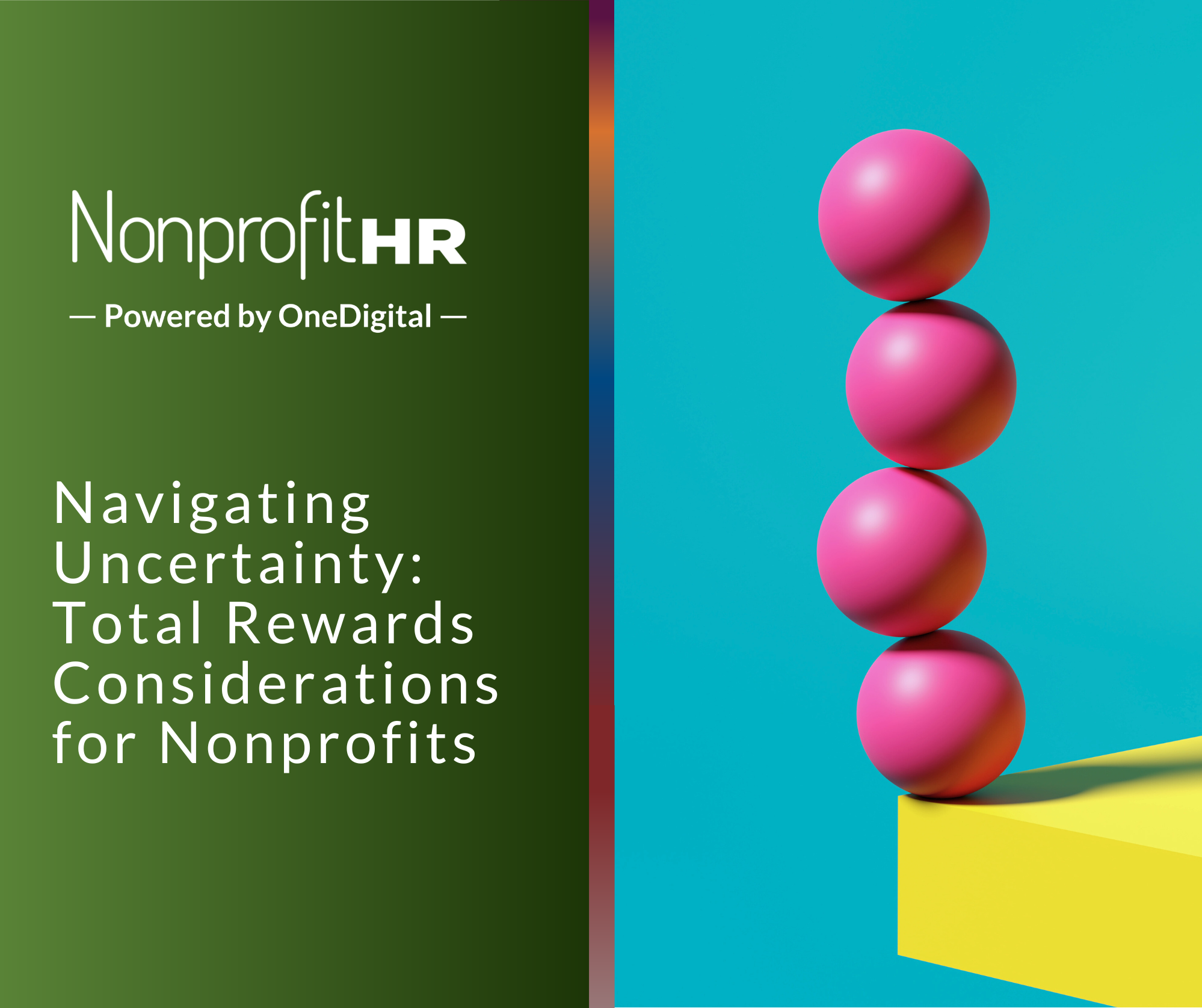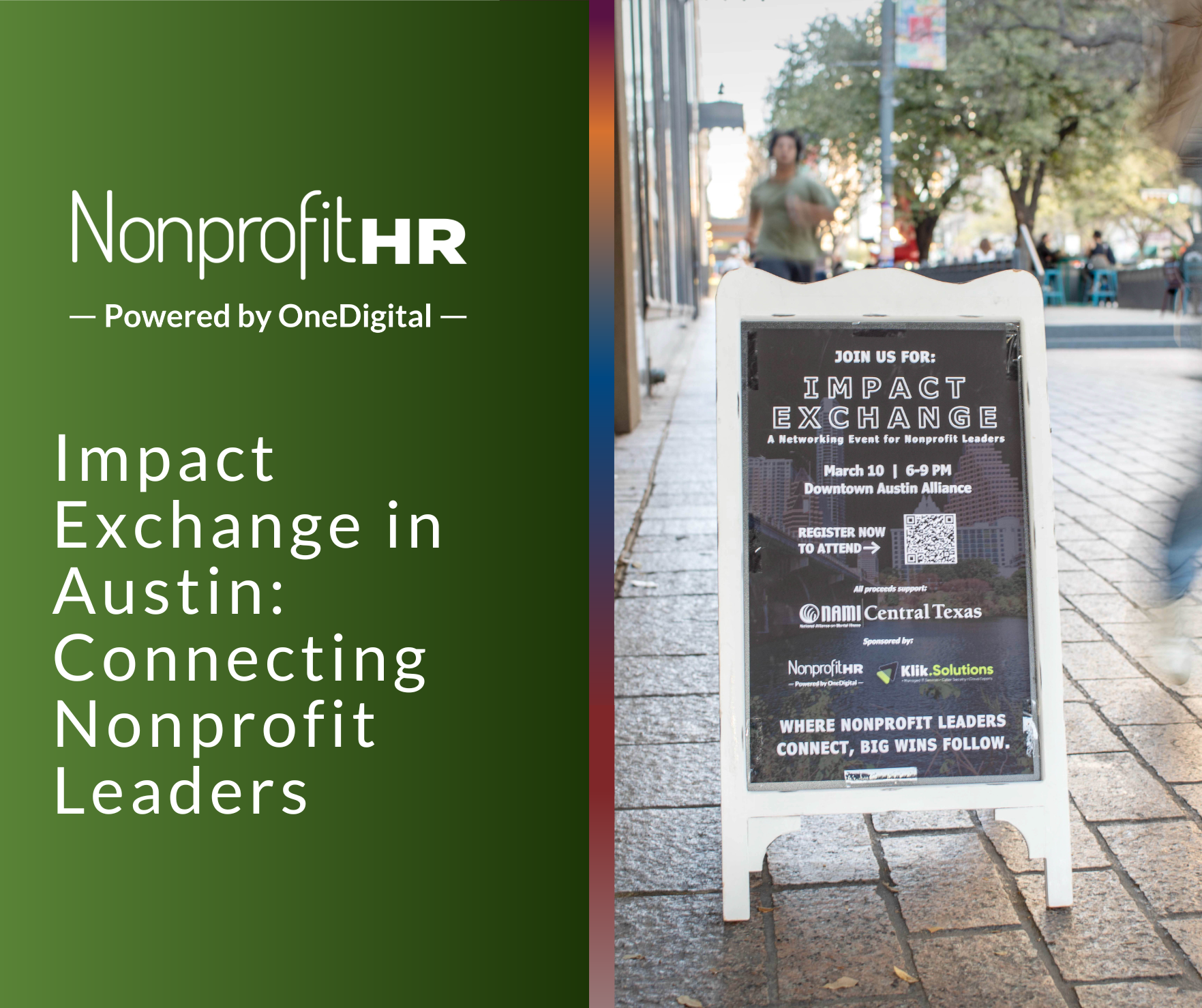WTOP: 5 ways nonprofits can…
The importance of conducting a thorough search for the right candidate cannot be understated. Search is not just a recruitment activity; it’s a unique opportunity to define your organization and the positive change it will drive for years to come. The right person for the executive or professional role can significantly impact your organization’s success. Conversely, the wrong person can be costly and time-consuming to replace.
Critical aspects of conducting a search for the right candidate include:
- Understanding the organization and mission needs
- Developing a search plan
- Identifying and recruiting candidates
- Screening and evaluating candidates
- Making an offer
Partnering with a third party can help you find the right candidates for your open positions more quickly and efficiently. Nonprofit HR has a deep-rooted understanding of the nonprofit sector and the unique challenges and opportunities faced by multifaceted social sector organizations.
If you’re considering doing it on your own, this blog aims to share my experience and insights based on best practices to find suitable candidates for social impact organizations.
Before Posting the Job Opening — Checklist
To ensure a seamless search process that identifies the ideal candidate for your organization, hiring committees should take a proactive approach before posting a job opening, which includes:
- Reassessing the Job Description: Reviewing the existing job description will ensure its relevance and alignment with the team’s current needs.
- Evaluating Skill Set Requirements: Assessing the skills needed for the role will determine if the team has the time and resources to train a new hire or if they need someone with immediate experience.
- Adapting to Changing Needs: Adjusting skill set requirements, particularly if the position has been vacant for an extended period, will align the job post to reflect organizational needs or changes in the job market.
- Aligning with Organizational Values: Identifying the characteristics of a great candidate based on your core values and principles will increase the likelihood that the new hire is a strong match for the team and the organization.
- Addressing Team Dynamics: Considering the team dynamic and being honest about potential challenges will facilitate a smooth onboarding process and promote a strong team culture.
By taking these steps, hiring committees can set the stage for a successful search process that attracts and identifies the best candidate to contribute to the organization’s mission and goals.
Understand the Organization’s Mission and Tailor Your Communication
Communication is crucial to the recruiting process. To ask candidates the right questions, recruiters must understand the organization’s mission and naturally tailor aspects into the conversation.
Once a search is in the pipeline, it’s helpful to spend the first week deep-diving into the mission to highlight all the elements, such as:
- Mission statement
- Operations
- How the position fits within and impacts the mission
- Work environment
- Volunteer activities
A caveat: You must uncover questions or topics you can and cannot discuss with candidates during an interview, especially if you operate independently. Your hiring committee can do this themselves, but we recommend partnering with search experts due to the legal risk involved. Their expertise will help to ensure that your interviews are fair and compliant.
Compatibility Matters: Looking Beyond the Resume
Review resumes after the pre-job post assessment and prep to see which candidates are qualified and meet the organizational requirements. Look for value-added candidates who are a good match given their initial listed qualifications. The pre-job post assessment and prep are incredibly useful during the search process. It helps me to understand the organization’s mission better so I can tailor my communication to candidates accordingly.
Meeting Candidates in Person
Sometimes, the best candidate does not look the best on paper. The reason is that paper only shows so much, and a resume doesn’t always capture the unique characteristics that make a strong candidate. The second or third candidate can shine through during interviews, making their way to the top position.
Meeting candidates in person whenever possible is paramount for assessing their nonverbal and verbal communication skills, and overall value-add to the organization. However, going into the interview with a plan to maximize your time and get the most valuable information is essential.
Here are some tips for preparing for and conducting in-person interviews:
- Develop a list of essential questions to help you assess the candidate’s qualifications, mission alignment and cultural fit. Tailor questions to the specific role and mission values.
- Leave time for assessment questions to help you determine whether the candidate is suitable for the role and the organization. These questions should be more open-ended and allow candidates to demonstrate their skills and experience.
- Pay attention to the candidate’s body language and communication skills. Are they confident and articulate? Do they make eye contact and listen attentively? Do they seem engaged and interested in the role?
- Observe how the candidate interacts with you and other team members. Are they a good match for the team culture? Are they respectful and professional?
Expanding your applicant pool to reflect the diverse skills, experience and community representation is requisite during recruitment and evaluation. Doing so will help ensure you are inclusive and hiring the best candidates. Sometimes, you may need to redirect your search for any number of reasons. A search is a dynamic and nuanced process. At this point, expert search consultants can help. They know the talent market well and can help you consider candidates you may have missed in your initial application or resume review.
Meeting your exact recruitment needs can be a vigorous process. You can do it yourself but may benefit from a thought partnership with expert consultants. They understand that your mission is powered by your people, particularly if your talent acquisition needs exceed the internal capacity to fill vacant roles.
From New Hire to Long-Term Employee: How to Ensure a Lasting Match
So much happens after you place a candidate. Here are some tips for ensuring that new hires are suitable for the long term.
- Follow up with the hiring committee: Ensure that they are still happy with the new hire, that they are meeting expectations and adjusting well to the role.
- Provide additional training and support: Some new hires may need extra help to get up to speed. Be sure to identify areas where they may need assistance and provide them with the necessary resources to succeed.
- Create a welcoming and supportive work environment: New hires should feel confident asking questions and requesting assistance. Encourage them to get involved in the team and across the organization.
- Provide regular feedback: Let new hires know how they are doing and what they can do to improve. This communication will help them to stay on track and develop their skills.
How to Handle Misalignments Between Jobs and New Staff Members
Different scenarios impact new hires in ways that prevent them from putting their best foot forward. As Search Consultants, we can tell during coaching sessions with our clients when there is an apparent misalignment. We follow through with the hiring committee by asking: It sounds like you had great intentions when you went into this, but is this something you will be happy with long-term?
If a candidate doesn’t work out, know it’s okay to ask for help. Once re-engaged, we check in with the hiring committee to understand their intentions and long-term goals. Then, we discuss the onboarding process and set expectations for when we need to go back to the drawing board.
With more data and lessons learned, we can conduct a more targeted search and deliver a better match the second time around. We also maintain a small pool of backup candidates that we can ask the client to consider and we stay in touch with these candidates to keep them engaged.
Did you know that from 2021-2022, Nonprofit HR achieved a 90% retention rate for all executive placements by client organizations and a 90% retention rate for professional placements? Consider partnering with Nonprofit HR so we can walk you through every step of the search process. Schedule a mini consult today!
Contributing Author
Cassandra Bacon
Consultant, Search, Impact Search Advisors by Nonprofit HR
Email Cassandra: [email protected]
View Cassandra’s bio.
At Nonprofit HR, we value employees who bring their whole selves to work. Many of our colleagues are passionate and dedicated to social justice side and outside the workplace. From these lived experiences, our people understand the unique challenges and opportunities of the nonprofit world.
We have seen firsthand what it takes to succeed in various mission types and structures. Cassie Bacon is a shining example as she has volunteered extensively throughout her life, including animal shelters and blood donors for crisis relief missions. Read more about her social sector journey in her staff story.






























